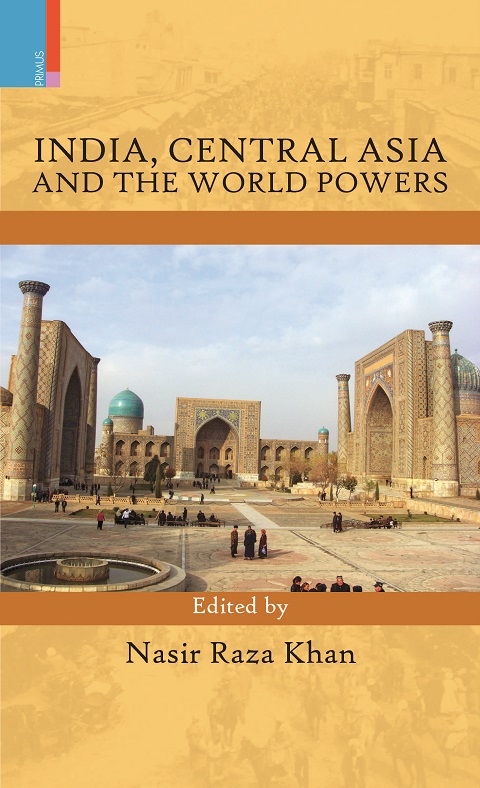
INFORMATION
- EDITOR : Nasir Raza Khan
- HB ISBN : 78-93-80607-63-4
- Year : 2013
- Extent : 156
- Discount available on checkout
- Usually dispatched within 3 to 5 working days.
Tagore
| HB ₹ 995 . $ . ₤ |
PB ₹ . $ . ₤ |
|
| POD ₹ . $ . ₤ |
e-Book ₹ . $ . ₤ |
INFORMATION
- AUTHOR –
- ISBN – 978-93-84082-78-9
- Year – 2016
- Extent: 400 + 40 coloured illustrations
- 10% discount + free shipping
- Usually dispatched within 3 to 5 working days.
This volume offers a fresh insights onto India-Central Asia relations and a deeper understanding of the developing political and economic scenario of the region. Extending research on these subjects, the essays in this volume examine the role of major powers in the region against the backdrop of globalization, disintegration of the Soviet Union, and the emergence of the US as a pre-eminent power. It is within the arena of an emerging ‘New Great Game’ that India must translate its historical, cultural, and civilizational ties with Central Asia into a vibrant and mutually beneficial economic partnership extending not only to trade in goods and services but also bilateral and multilateral investments, scientific collaboration, and commercialization of new technologies. Exploring these issues, this volume foregrounds India’s aspirations and its potential to be a player in the unfolding ‘Great Game’ on an equal footing with other major players like the US, Russia, and China.
The Editor
Nasir Raza Khan is Officiating Director of the India-Arab Cultural Centre, Jamia Millia Islamia, New Delhi, and former Director of the Lal Bahadur Shastri Centre for Indian Culture, Tashkent, Uzbekistan. His recent publications include India, Central Asia and the World Powers (2013), Regional Sufi Centres in India: Significance & Contribution (2015), India and Central Asia: Geopolitics, Economy and Culture (2016) and Sufism in India and Central Asia (2017).<
As a global figure, Tagore transcends the boundaries of language and reaches out to people distant both in time and space. His art took inspiration from contemporary Western trends and became a powerful means to connect with people beyond Bengal. Word, image, song, and text were his tools of communication, as also his extraordinary presence in a sartorial garb of his own design. A littérateur in many genres, the impact of his work was determined both by the material he presented, and by its simultaneously local and global contexts. Now, when his international reputation has spanned over more than a hundred years, it is important to revisit the sites of Tagore’s eminence, and ask to what extent he was a ‘living text’ in the century that witnessed him as a global intellectual.
Accordingly, this volume investigates how Tagore’s writings and art are linked to the metalinguistic domains of the psychological, medical and mythical; how he was received in various cultures outside India; how his art was determined by individual circumstances and global aspirations; and how he acted as an inspiration to his contemporaries and subsequent generations including modern Indian writers and artists.
The Editor
Imre Bangha studied in Budapest and Santiniketan and at present is Associate Professor of Hindi at the University of Oxford. He has published books and essays in English, Hindi, and Hungarian on literature in Brajbhasha and other forms of old Hindi and has also prepared Hungarian translations from various South Asian languages. His work on the international reception of Bengali culture includes Rabindranath Tagore: Hundred Years of Global Reception (2014, co-edited with M. Kämpchen) and Hungry Tiger: Encounter between India and Central Europe (2007).




